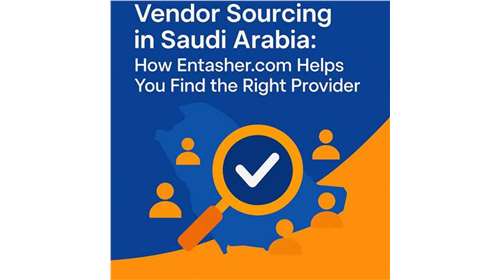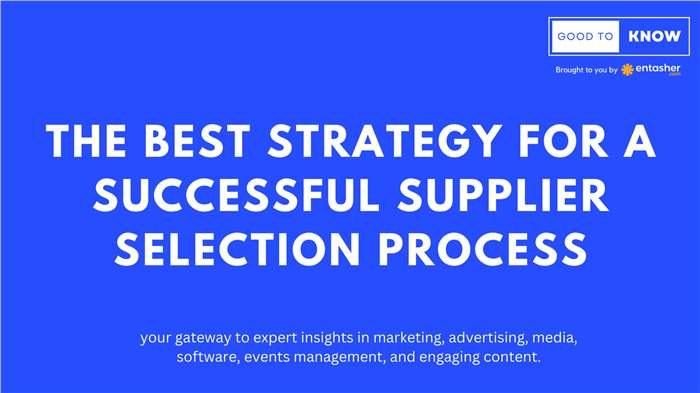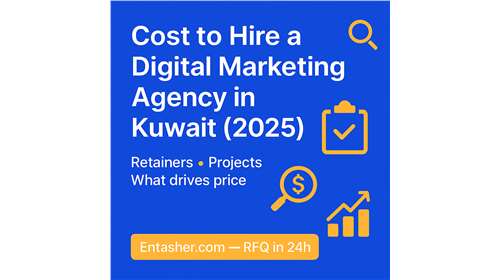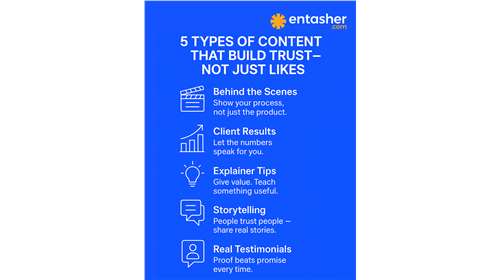
The Best Strategy for a Successful Supplier Selection Process ✽

In today's competitive business landscape, the success of any company is intricately tied to its ability to choose the right suppliers. Selecting reliable and efficient suppliers is crucial for maintaining high-quality products or services, timely deliveries, and cost-effectiveness. A well-defined and strategic supplier selection process can significantly impact a company's operational efficiency and overall success. In this article, we will explore the best strategy for a successful supplier selection process, which can be implemented by businesses of all sizes and industries.
1. Define Clear Requirements and Objectives
Before embarking on the supplier selection process, it is essential to define clear requirements and objectives. This step lays the foundation for the entire selection process and ensures that all stakeholders are aligned on what they need from a supplier. The key aspects to consider when defining requirements are:
-
Quality Standards: Specify the quality standards and certifications required for the products or services. This will help ensure that the chosen suppliers meet the necessary industry benchmarks.
-
Cost Parameters: Determine the budgetary constraints and assess the total cost of ownership rather than just the initial price. Consider factors like shipping, handling, and potential maintenance costs.
-
Capacity and Scalability: Evaluate the supplier's capacity to meet current and future demands. A supplier with scalable capabilities will be better equipped to grow alongside your business.
-
Delivery Time: Define the expected delivery timelines to ensure the supplier's ability to meet your deadlines consistently.
2. Conduct Thorough Supplier Research
Once the requirements and objectives are set, it's time to conduct thorough supplier research. Leverage all available resources, including industry databases, online platforms, trade shows, and networking events. Consider the following steps during the research phase:
-
Supplier Identification: Create a list of potential suppliers who align with your requirements and have a good reputation in the market.
-
Supplier Background Check: Scrutinize the shortlisted suppliers for their experience, financial stability, past performance, and customer reviews.
-
Supplier Site Visits: If feasible, conduct site visits to assess the supplier's facilities, production processes, and quality control measures.
-
Supplier Interviews: Engage in one-on-one interviews with the supplier's representatives to gain insights into their company culture, values, and commitment to customer satisfaction.
3. Implement a Vendor Evaluation System
A comprehensive vendor evaluation system is a crucial component of the supplier selection process. This system should include a set of key performance indicators (KPIs) that will be used to assess and compare different suppliers. Some essential KPIs include:
-
Quality Performance: Measure the supplier's track record in delivering high-quality products or services consistently.
-
Reliability and Responsiveness: Evaluate the supplier's ability to meet deadlines and promptly respond to inquiries or issues.
-
Financial Stability: Analyze the supplier's financial health and stability to ensure they can support your long-term requirements.
-
Innovation and Adaptability: Consider the supplier's willingness and capacity to innovate, especially if your industry undergoes frequent changes.
4. Request for Proposals (RFPs) and Quotations
After narrowing down the list of potential suppliers, issue Request for Proposals (RFPs) or Request for Quotations (RFQs). The RFP should outline the scope of work, specifications, terms and conditions, and evaluation criteria. This step allows suppliers to present their proposals, giving you a comprehensive view of what each can offer.
For RFQ related to Marketing - Advertising - Media - Software - Events or production you can use entasher.com that connect you with top verified service providers from this link
5. Conduct Supplier Audits
For critical or high-value suppliers, it is advisable to conduct supplier audits. Audits provide a deeper understanding of the supplier's capabilities, processes, and adherence to quality and safety standards. A well-executed audit can reveal insights that may not be apparent from the proposal alone.
6. Make an Informed Decision
Once all the proposals are received and supplier audits are completed, it's time to make an informed decision. Evaluate each supplier based on the pre-defined KPIs, financial stability, and compatibility with your organization's values. Remember to consider both short-term and long-term benefits.
7. Establish Strong Relationships
Lastly, successful supplier selection doesn't end with signing a contract. Building strong, collaborative relationships with chosen suppliers is crucial for long-term success. Regular communication, performance reviews, and feedback sessions can foster a mutually beneficial partnership.
In conclusion, a successful supplier selection process is built on clear requirements, thorough research, objective evaluation, and strong relationships. By following this strategic approach, businesses can optimize their supplier base, reduce risks, and enhance their overall competitiveness in the market. Remember that the supplier selection process is not static; it should be continuously reviewed and refined to adapt to changing business needs and market conditions.


